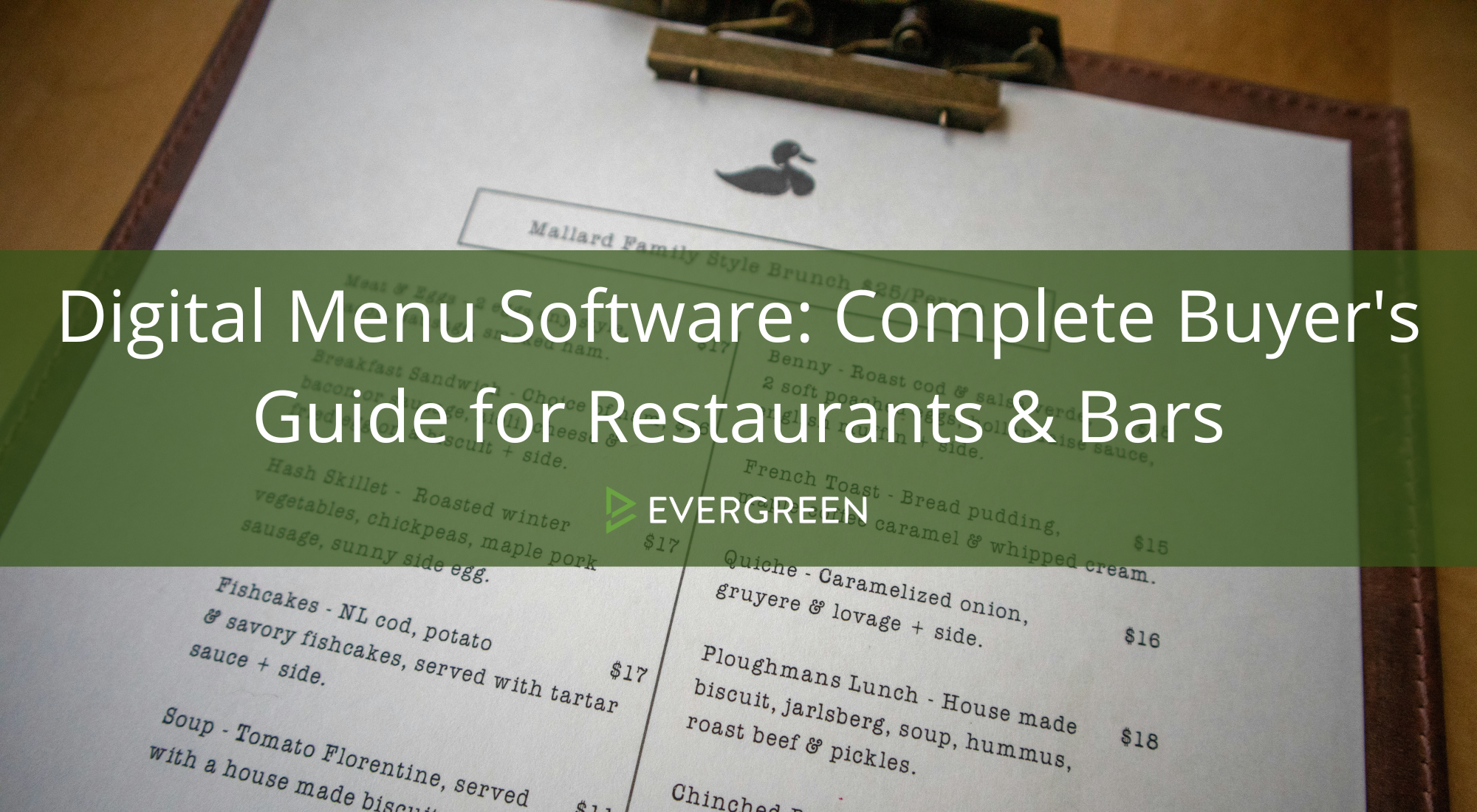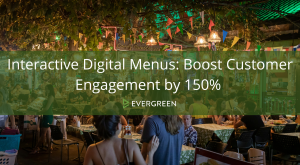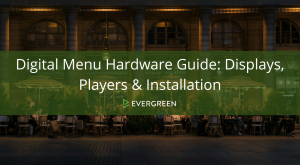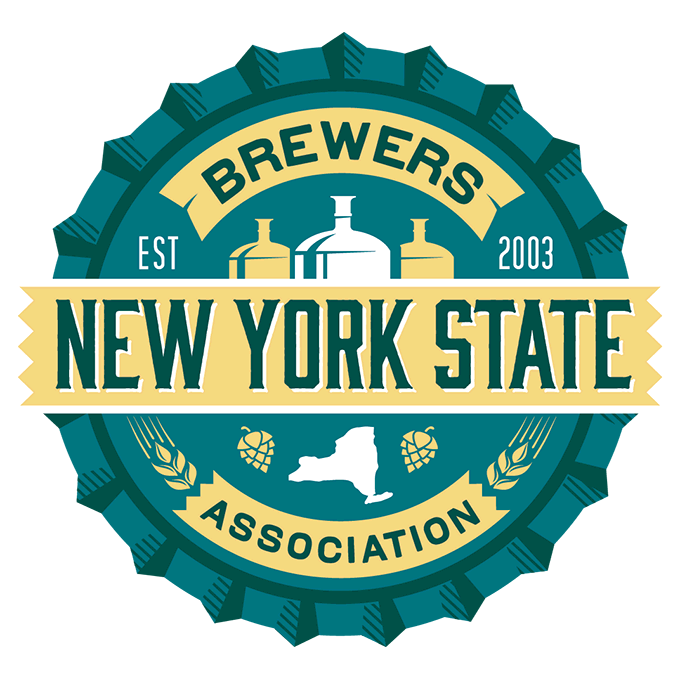The restaurant industry has transformed dramatically, and digital menu software stands at the forefront of this revolution. With 73% of diners expecting digital ordering options and restaurants reporting average sales increases of 30% after implementing digital menu systems, the question isn’t whether to go digital—it’s which solution will drive your business forward.
Why Digital Menu Software Matters More Than Ever in 2025
Today’s diners arrive with smartphones in hand, ready to scan QR codes and browse interactive menus. The pandemic accelerated this shift, but consumer behavior has permanently changed. Customers now prefer touchless interactions, real-time menu updates, and seamless ordering experiences.
Restaurant operators who embrace digital menu software gain immediate advantages: reduced printing costs, instant price updates, enhanced food photography capabilities, and detailed analytics on customer preferences. These systems pay for themselves quickly while creating opportunities for increased revenue through strategic menu engineering.
The technology has matured significantly. Modern digital menu software integrates seamlessly with point-of-sale systems, inventory management, and kitchen display screens. What once required technical expertise now operates with user-friendly interfaces that any staff member can master.
Essential Features Every Digital Menu System Should Include
Real-Time Menu Management
Top-tier digital menu software allows instant updates across all platforms. When your kitchen runs out of the daily special at 7 PM, you can remove it from all digital displays immediately. This prevents disappointed customers and reduces order complications.
Advanced systems offer scheduling features, automatically switching from lunch to dinner menus or enabling happy hour specials at predetermined times. The best platforms also support seasonal menu changes, holiday promotions, and limited-time offers with built-in expiration dates.
Multi-Location Synchronization
Restaurant groups need software that manages multiple locations effortlessly. Premium solutions provide centralized control while allowing individual locations to customize offerings based on local preferences or ingredient availability.
This feature proves invaluable during supply chain disruptions. When one location can’t source a particular ingredient, managers can quickly adjust that location’s menu without affecting other sites.
Advanced Analytics and Reporting
Data-driven decision making separates successful restaurants from struggling competitors. Quality digital menu software tracks which items customers view most, how long they spend on different menu sections, and which descriptions drive orders.
These insights enable menu optimization that directly impacts profitability. Restaurants using analytics-driven menu engineering report 15-25% increases in average check sizes within six months of implementation.
Seamless POS Integration
Your digital menu software should communicate flawlessly with your existing point-of-sale system. Orders placed through digital menus must flow directly into kitchen workflows without manual data entry or duplicate order risks.
Integration extends beyond basic order transmission. Premium systems synchronize inventory levels, automatically hiding out-of-stock items and updating pricing changes across all platforms simultaneously.
2025 Pricing Models: What to Expect
Subscription-Based Pricing
Most digital menu software providers offer monthly or annual subscription plans ranging from $29 to $199 per location. Basic plans typically include essential features like menu management and QR code generation, while premium tiers add advanced analytics, multi-location management, and priority support.
Enterprise solutions for restaurant groups often feature custom pricing based on location count and specific requirements. These plans frequently include dedicated account management, custom integrations, and enhanced security features.
Setup and Implementation Costs
Initial setup fees vary significantly among providers. Some companies include setup in their monthly subscription, while others charge $200 to $500 per location for initial configuration and staff training.
Hardware costs depend on your chosen display method. QR code-based systems require minimal hardware investment, while digital menu boards need displays, media players, and mounting equipment. Budget $500 to $2,000 per display location for quality hardware.
Hidden Costs to Consider
Payment processing fees apply when digital menus include ordering capabilities. These typically range from 2.9% to 3.5% per transaction, similar to other online ordering platforms.
Staff training time represents another cost factor. While modern systems are user-friendly, budget for initial training sessions and ongoing support as your team learns the system’s full capabilities.
ROI Analysis: Measuring Success
Direct Cost Savings
Restaurants eliminate printing costs immediately after implementing digital menu software. The average restaurant spends $2,000 to $5,000 annually on menu printing, considering reprints for price changes, seasonal updates, and wear replacement.
Labor savings accumulate through reduced time spent on menu updates and order clarifications. Staff can focus on customer service rather than explaining menu items or handling questions about availability.
Revenue Enhancement Opportunities
Digital menus excel at strategic upselling through enhanced product photography, detailed descriptions, and suggested pairings. Restaurants report 20-35% increases in appetizer and dessert orders after implementing digital systems with compelling visuals.
Dynamic pricing capabilities allow real-time adjustments based on demand, time of day, or inventory levels. Happy hour promotions, weekday lunch specials, and inventory clearance pricing become effortless to implement and modify.
Customer Experience Improvements
Faster ordering processes reduce table turnover times, allowing restaurants to serve more customers during peak periods. The average digital order takes 3-5 minutes compared to 8-12 minutes for traditional ordering methods.
Multilingual menu support expands customer base in diverse markets. Digital systems can display menus in multiple languages instantly, improving accessibility and customer satisfaction.
Implementation Strategies for Maximum Success
Phase 1: Planning and Preparation
Start by auditing your current menu structure and identifying items that photograph well. High-quality food photography significantly impacts digital menu success, so invest in professional photography or high-resolution images.
Review your current POS system’s integration capabilities. Most modern systems support API connections, but older systems may require hardware upgrades or workaround solutions.
Phase 2: Staff Training and Soft Launch
Train your team thoroughly before customer-facing implementation. Staff should understand how to update menus, troubleshoot common issues, and assist customers who need help accessing digital menus.
Begin with a soft launch during slower periods. This approach allows your team to become comfortable with the system while gathering initial customer feedback for refinements.
Phase 3: Full Deployment and Optimization
Roll out digital menus during regular operating hours while maintaining paper backup options for the first few weeks. Monitor customer adoption rates and staff confidence levels before removing traditional menus entirely.
Continuously analyze performance data to optimize menu layouts, pricing, and item descriptions. The most successful restaurants treat their digital menus as living documents that evolve based on customer behavior and business performance.
Case Studies: Real Restaurants, Real Results
The Craft Beer Gastropub
A 150-seat gastropub in Portland implemented digital menu software to manage their rotating craft beer selection and seasonal food menu. Within six months, they reported a 32% increase in beer sales and 18% growth in food revenue.
The key success factor was real-time updates for their 24-tap beer selection. Previously, customers often ordered beers that had kicked, creating disappointment and service delays. Digital menus eliminated this problem while highlighting new arrivals and limited releases effectively.
Their analytics revealed that customers spent significantly more time reading beer descriptions on digital menus, leading to more adventurous ordering patterns and higher-priced selections.
Multi-Location Sports Bar Chain
A regional sports bar chain with 12 locations struggled with menu consistency and promotional coordination across sites. After implementing centralized digital menu software, they achieved remarkable results:
28% increase in promotional item sales during sporting events
85% reduction in menu-related customer complaints
$15,000 annual savings in printing costs across all locations
The system’s scheduling features allowed automatic activation of game-day specials and happy hour pricing, ensuring consistency while reducing management overhead.
Fine Dining Restaurant Revolution
An upscale steakhouse initially hesitated to implement digital menus, fearing they would detract from their elegant atmosphere. However, tablet-based wine lists and dessert menus enhanced their sophisticated image while providing practical benefits.
The restaurant saw a 45% increase in wine sales after implementing digital wine lists with detailed tasting notes, food pairings, and sommelier recommendations. Customers appreciated the additional information, and servers could focus on service rather than memorizing extensive wine knowledge.
2025 Technology Trends Shaping Digital Menus
Artificial Intelligence Integration
AI-powered menu optimization analyzes customer ordering patterns, weather data, and local events to suggest menu modifications and pricing adjustments. These systems can predict demand fluctuations and recommend inventory adjustments before shortages occur.
Machine learning algorithms identify which menu descriptions and images drive the highest conversion rates, automatically suggesting improvements to underperforming items.
Voice-Activated Ordering
Smart speaker integration allows customers to place orders using voice commands, particularly valuable for drive-through and delivery operations. This technology reduces order errors while speeding up the ordering process.
Augmented Reality Menu Experiences
AR technology enables customers to visualize dishes before ordering, using smartphone cameras to display 3D food models on their tables. While still emerging, early adopters report significant increases in order confidence and satisfaction.
Choosing the Right Provider: Key Evaluation Criteria
Technical Reliability and Support
Examine uptime guarantees and support response times carefully. Menu system failures during peak dining periods can severely impact revenue, so reliable service and quick technical support are non-negotiable.
Look for providers offering 24/7 technical support and guaranteed response times for critical issues. The best companies provide dedicated account managers for enterprise clients and comprehensive training resources.
Customization Capabilities
Your digital menu should reflect your brand identity seamlessly. Evaluate customization options for colors, fonts, layouts, and branding elements. The most flexible systems allow extensive customization without requiring coding knowledge.
Consider future needs when assessing customization features. As your restaurant evolves, your menu system should adapt without requiring complete replacement.
Integration Ecosystem
Beyond POS integration, consider connections with inventory management, loyalty programs, and marketing platforms. Comprehensive integration reduces manual data entry and ensures consistent information across all business systems.
Review available APIs and third-party partnerships. The most successful restaurants create interconnected technology ecosystems that share data seamlessly between platforms.
Security and Compliance Considerations
Data Protection Standards
Digital menu software handles customer information and payment data, making security paramount. Ensure your chosen provider complies with PCI DSS standards and implements robust encryption for all data transmission and storage.
Regular security audits and updates demonstrate provider commitment to protecting your business and customer information.
Privacy Compliance
With increasing privacy regulations worldwide, verify that your digital menu software complies with relevant laws like GDPR, CCPA, and local privacy requirements. This compliance protects your business from regulatory penalties and builds customer trust.
Future-Proofing Your Digital Menu Investment
Scalability Planning
Choose software that grows with your business. Whether you plan to add locations, expand menu offerings, or integrate additional technologies, your digital menu system should accommodate these changes without requiring complete replacement.
Technology Evolution Adaptability
The restaurant technology field evolves rapidly. Select providers with strong development teams and regular feature updates. The best companies continuously add functionality based on industry trends and customer feedback.
Consider the provider’s roadmap and commitment to innovation. Companies investing heavily in research and development are more likely to remain competitive and relevant as technology advances.
Making the Final Decision
Selecting digital menu software represents a significant decision that will impact your restaurant’s operations for years. The most successful implementations result from thorough research, careful planning, and realistic expectations about implementation timelines and learning curves.
Start by clearly defining your specific needs and budget constraints. Request demonstrations from multiple providers and test their systems with real menu content. Pay attention to user experience from both staff and customer perspectives.
Consider starting with a single location or limited implementation to evaluate system performance before committing to a full rollout. This approach reduces risk while providing valuable insights for broader implementation.
The restaurants thriving in 2025 are those that embrace technology while maintaining focus on exceptional food and service. Digital menu software enhances these fundamentals rather than replacing them, creating opportunities for increased profitability and improved customer experiences.
Your investment in digital menu software today positions your restaurant for continued success in an increasingly digital marketplace. The question isn’t whether to implement digital menus, but which solution will best serve your unique needs and goals.
With careful selection and proper implementation, digital menu software becomes a powerful tool for growth, efficiency, and customer satisfaction. The restaurants making this transition now will lead their markets while others struggle to catch up with evolving customer expectations.













